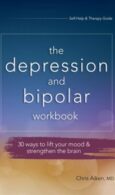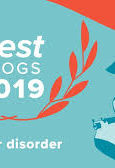Support
Updated 30 June 2024
Here are some bipolar disorder support groups and organizations based in Sydney, Australia, that you may find helpful. These organizations and support groups offer a range of services from peer support and information to crisis intervention and advocacy. Contacting them directly or visiting their websites can provide more detailed information about local support groups specifically in Sydney.
- Black Dog Institute
- Description: Black Dog Institute offers various support groups and programs for individuals with mood disorders, including bipolar disorder.
- Website: Black Dog Institute – Support Groups
- SANE Australia
- Description: SANE Australia provides online forums and support groups for individuals affected by mental health conditions, including bipolar disorder.
- Website: SANE Australia – Forums
- Bipolar Life NSW
- Description: Bipolar Life NSW is a peer support group for individuals living with bipolar disorder in New South Wales, including Sydney.
- Website: Bipolar Life NSW
- The Butterfly Foundation
- Description: The Butterfly Foundation offers support groups and services for individuals affected by mood disorders, including bipolar disorder.
- Website: The Butterfly Foundation – Support Groups
- Headspace
- Description: Headspace provides mental health support services for young people aged 12-25, including information and resources on bipolar disorder.
- Website: Headspace – Find a Centre
- Lifeline Harbour to Hawkesbury
- Description: Lifeline Harbour to Hawkesbury offers crisis support services and may have information on local support groups for bipolar disorder.
- Website: Lifeline Harbour to Hawkesbury
- Mental Health Carers NSW
- Description: Mental Health Carers NSW provides support and advocacy for carers of individuals with mental health conditions, including bipolar disorder.
- Website: Mental Health Carers NSW
- Bipolar Australia
- Description: Bipolar Australia provides information, resources, and support services for individuals and families affected by bipolar disorder.
- Website: Bipolar Australia
Here are some reputable online resources in Australia that provide information and support for bipolar disorder:
- SANE Australia:
- Website: SANE Australia
- Description: SANE Australia offers a wealth of information on mental health conditions, including bipolar disorder. They provide factsheets, personal stories, and a helpline for support.
- Black Dog Institute:
- Website: Black Dog Institute
- Description: Black Dog Institute is dedicated to understanding, preventing, and treating mental illness. They provide resources on bipolar disorder, including self-help tools and information on research.
- Beyond Blue:
- Website: Beyond Blue
- Description: Beyond Blue offers support and information on mental health issues, including bipolar disorder. They have resources for individuals, friends, and family members affected by mental health conditions.
- Lifeline Australia:
- Website: Lifeline Australia
- Description: Lifeline provides crisis support services over the phone and online. They also offer resources and information on mental health conditions like bipolar disorder.
- Headspace:
- Website: headspace
- Description: headspace provides mental health support for young people aged 12-25. They offer information on bipolar disorder and other mental health conditions, as well as access to online and in-person support services.
- ReachOut Australia:
- Website: ReachOut Australia
- Description: ReachOut provides practical support, tools, and information for young people and their parents dealing with mental health issues, including bipolar disorder.
- Australian Psychological Society (APS):
- Website: Australian Psychological Society
- Description: APS offers a directory of psychologists across Australia who specialize in treating bipolar disorder and other mental health conditions. They also provide resources and information on finding psychological support.
Here’s a list of reliable sources of information for people with bipolar disorder. These sources offer a wealth of information, support, and community for individuals seeking to understand and manage bipolar disorder effectively:
- National Institute of Mental Health (NIMH):
- Website: NIMH
- Description: NIMH provides comprehensive and up-to-date information on bipolar disorder, including symptoms, treatments, research updates, and resources for individuals and families.
- Mayo Clinic:
- Website: Mayo Clinic – Bipolar Disorder
- Description: Mayo Clinic offers extensive information on bipolar disorder, including symptoms, causes, diagnosis, treatment options, and lifestyle and coping strategies.
- National Alliance on Mental Illness (NAMI):
- Website: NAMI – Bipolar Disorder
- Description: NAMI provides educational resources, support groups, and advocacy for individuals and families affected by mental health conditions, including bipolar disorder.
- PsychCentral:
- Website: PsychCentral – Bipolar Disorder
- Description: PsychCentral offers in-depth articles, guides, and resources on bipolar disorder, covering symptoms, treatments, medications, and living with the condition.
- Mind (UK-based, but applicable information):
- Website: Mind – Bipolar Disorder
- Description: Mind provides reliable information and support for people in the UK and beyond, covering various aspects of bipolar disorder, including symptoms, treatments, and support options.
- Bipolar Australia:
- Website: Bipolar Australia
- Description: Bipolar Australia offers information specific to the Australian context, including resources, support services, and personal stories related to bipolar disorder.
- International Bipolar Foundation:
- Website: International Bipolar Foundation
- Description: IBPF provides education, advocacy, and support for individuals living with bipolar disorder worldwide. They offer resources, webinars, and community forums.
- HealthyPlace:
- Website: HealthyPlace – Bipolar Disorder
- Description: HealthyPlace features articles, blogs, and videos on bipolar disorder, covering topics such as symptoms, treatment options, self-help strategies, and personal experiences.
Global Research Institutes:
These institutes are recognized for their contributions to advancing our understanding of bipolar disorder through rigorous scientific research and clinical studies. They play a crucial role in shaping treatment strategies and improving outcomes for individuals living with bipolar disorder:
- Stanley Center for Psychiatric Research at Broad Institute (USA)
- Website: Broad Institute – Stanley Center
- Description: Conducts genetic and genomic research to understand the causes of psychiatric disorders, including bipolar disorder.
- National Institute of Mental Health (NIMH) (USA)
- Website: NIMH
- Description: Leads research efforts in the United States to understand, diagnose, and treat mental illnesses, including bipolar disorder.
- The Royal College of Psychiatrists (UK)
- Website: Royal College of Psychiatrists
- Description: Promotes research, education, and training in psychiatry, including studies on bipolar disorder.
- Oxford University Department of Psychiatry (UK)
- Website: Oxford Psychiatry
- Description: Engages in research on the neuroscience and treatment of psychiatric disorders, including bipolar disorder.
- University of California, Los Angeles (UCLA) – Semel Institute for Neuroscience and Human Behavior (USA)
- Website: UCLA Semel Institute
- Description: Conducts research in neuroscience and psychiatric disorders, including bipolar disorder.
- University of Toronto – Centre for Addiction and Mental Health (CAMH) (Canada)
- Website: CAMH
- Description: Focuses on research, education, and clinical care for mental health disorders, including bipolar disorder.
- Karolinska Institute (Sweden)
- Website: Karolinska Institute
- Description: Conducts research in medicine, neuroscience, and psychiatry, with studies on bipolar disorder.
- Max Planck Institute of Psychiatry (Germany)
- Website: Max Planck Institute of Psychiatry
- Description: Engages in psychiatric research, including molecular genetics and neuroimaging studies relevant to bipolar disorder.
- University of Melbourne – Florey Institute of Neuroscience and Mental Health (Australia)
- Website: Florey Institute
- Description: Conducts research on brain disorders, including bipolar disorder, with a focus on neuroscience and mental health.
- University of Pittsburgh – Department of Psychiatry (USA)
- Website: Pitt Psychiatry
- Description: Engages in research on mental health disorders, including bipolar disorder, with a focus on neuroscience and clinical trials.
Professional bodies
Organisations dedicated to Bipolar Disorder around the world:
- International Society for Bipolar Disorders (ISBD)
- Website: isbd.org
- European Network of Bipolar Research Expert Centres (ENBREC)
- Website: enbrec.net
- Canadian Network for Mood and Anxiety Treatments (CANMAT)
- Website: canmat.org
- Australian and New Zealand Society of Bipolar and Depressive Disorders (ANZBDP)
- Website: anzbdp.org
- Depression and Bipolar Support Alliance (DBSA)
- Website: dbsalliance.org
- National Alliance on Mental Illness (NAMI)
- Website: nami.org
- The Black Dog Institute (Australia)
- Website: blackdoginstitute.org.au
- Mood Disorders Society of Canada
- Website: mdsc.ca
- Bipolar UK
- Website: bipolaruk.org
Other useful sites
- bpHope Magazine A wonderful online magazine full of wonderful stories, blogs, informative videos and research updates. Be sure to subscribe.
Books
Check out the International Bipolar Foundation’s Recommended Reading List:
- Louisa G. Sylvia, Ph.D. and Andrew A. Nierenberg, M.D., The Wellness Workbook for Bipolar Disorder (Oakland, CA: New Harbinger Publications, 2015).
- David D. Burns, M.D., The Feeling Good Handbook, revised ed. (New York: Plume, 1999).
- Thilo Deckersbach, Ph.D., Britta Hölzel, Ph.D, Lori Eisner, Ph.D., Sara W. Lazar, and Andrew A. Nierenberg, M.D., Mindfulness-Based Cognitive Therapy for Bipolar Disorder (New York: Guilford Press, 2014).
- S. Nassir Ghaemi, M.D., Mood Disorders: A Practical Guide, 2nd edition (Philadelphia: Wolters Kluwer, 2008).
- Kay Redfield Jamison, An Unquiet Mind: A Memoir of Moods and Madness (New York: Vintage, 1997).
- William J. Knaus, Ed.D., and Albert Ellis, Ph.D., The Cognitive Behavioral Workbook for Depression: A Step-by-Step Program, 2nd edition (Oakland, CA: New Harbinger Publications, 2012).
- Stephanie McMurrich Roberts, Ph.D., Louisa Grandin Sylvia, Ph.D., and Noreen A. Reilly-Harrington, Ph.D., The Bipolar II Disorder Workbook (Oakland, CA: New Harbinger Publications, 2013).
- David J. Miklowitz, Ph.D., The Bipolar Disorder Survival Guide: What You and Your Family Need to Know, 3rd edition (New York: Guilford Press, 2018).
- Susan J. Noonan, M.D., M.P.H., Managing Your Depression: What You Can Do to Feel Better (Baltimore: Johns Hopkins University Press, 2013).
- Phelps J. and Aiken, Chris., Bipolar, Not so Much. Understanding Your Mood Swings and Depression. (W.W. Norton & Co, 2017).
- William Styron, Darkness Visible: A Memoir of Madness (New York: Random House, 1990).
- Mark Williams, John Teasdale, Zindel Segal, and Jon Kabat-Zinn, The Mindful Way Through Depression: Freeing Yourself From Chronic Unhappiness (New York: Guilford Press, 2007).
- James Phelps. A Spectrum Approach to Mood Disorders. (New York: W.W. Norton & Co, 2016).
- William Marchand. Mindfulness for Bipolar Disorder – How Mindfulness and Neuroscience Can Help You Manage Your Bipolar Symptoms. (Oakland: New Harbinger, 2015).
- Monica Ramirez Basco. The Bipolar Workbook – Tools for Controlling Your Mood Swings. 2nd Ed. (New York: Guilford Press, 2015).
- Kerrie Eyers and Gordon Parker. Mastering Bipolar Disorder: An Insider’s Guide to Managing Mood Swings and Finding Balance. (Sydney: Allen & Unwin, 2009).
Useful Apps for Bipolar Disorder
Here’s a list of current 2024 top apps for bipolar disorder along with live links to their respective app stores:
- Daylio
- eMoods
- MoodPath
- Bipolar Disorder Connect
- Bipolar Burble Mood Tracking
- Woebot
- Pacifica
- Talkspace
- Sanvello
- Moodfit
- imoodjournal
- Bipolar UK
These apps offer various features such as mood tracking, community support, educational resources, and therapeutic tools to assist individuals in managing bipolar disorder effectively
Podcasts
These podcasts offer a range of perspectives on bipolar disorder, from personal experiences to expert insights and scientific discussions, providing valuable information and support for individuals affected by this condition.
- The Bipolar Disorder Podcast
- Hosts: Chris Cole and Kira Lynne
- Description: Explores topics related to bipolar disorder, including personal stories, coping strategies, and mental health advocacy.
- Link: The Bipolar Disorder Podcast
- Bipolar Style
- Host: John Emotions
- Description: Features discussions about living with bipolar disorder, mental health awareness, and interviews with guests sharing their experiences.
- Link: Bipolar Style
- The Psych Central Show
- Hosts: Gabe Howard and Vincent M. Wales
- Description: Covers various mental health topics, including episodes focused on bipolar disorder, with expert guests and personal stories.
- Link: The Psych Central Show
- Bipolar Disorder: Affective Disorders and Psychotherapy
- Host: Dr. Candida Fink
- Description: Discusses topics related to bipolar disorder, treatment approaches, and interviews with experts in the field of psychiatry.
- Link: Bipolar Disorder: Affective Disorders and Psychotherapy
- Bipolar Now Podcast
- Host: Mike Lardi
- Description: Focuses on practical tips for managing bipolar disorder, personal stories, and interviews with professionals and individuals living with bipolar disorder.
- Link: Bipolar Now Podcast
- Not Crazy
- Hosts: Gabe Howard and Jackie Zimmerman
- Description: Explores various mental health conditions, including bipolar disorder, with a blend of personal experiences and expert insights.
- Link: Not Crazy
- The Depression and Bipolar Support Alliance (DBSA) Podcast
- Host: Dr. Mark Komrad
- Description: Provides information and support for individuals living with depression and bipolar disorder, covering treatment options, self-care, and personal stories.
- Link: DBSA Podcast
- TalkBD
- Hosts: Clare Dolman and Bipolar UK
- Description: Discusses various aspects of bipolar disorder, including personal stories, treatment options, and coping strategies.
- Link: TalkBD
- The Carlat Psychiatry Report
- Host: Dr. Daniel Carlat
- Description: Covers psychiatric topics including bipolar disorder, with discussions on treatment approaches, research findings, and clinical insights.
- Link: The Carlat Psychiatry Report
- Huberman Lab Podcast
- Host: Dr. Andrew Huberman
- Description: Explores neuroscience and behavioral science topics, including episodes relevant to mental health and brain function.
- Link: Huberman Lab Podcast
- International Bipolar Foundation Podcast
- Description: Provides information and insights into bipolar disorder, featuring interviews with experts, personal stories, and updates on research and treatment.
- Link: International Bipolar Foundation Podcast
- The Mental Illness Happy Hour
- Host: Paul Gilmartin
- Description: Explores mental illness, including bipolar disorder, through interviews, personal stories, and discussions on various aspects of mental health.
- Link: The Mental Illness Happy Hour








